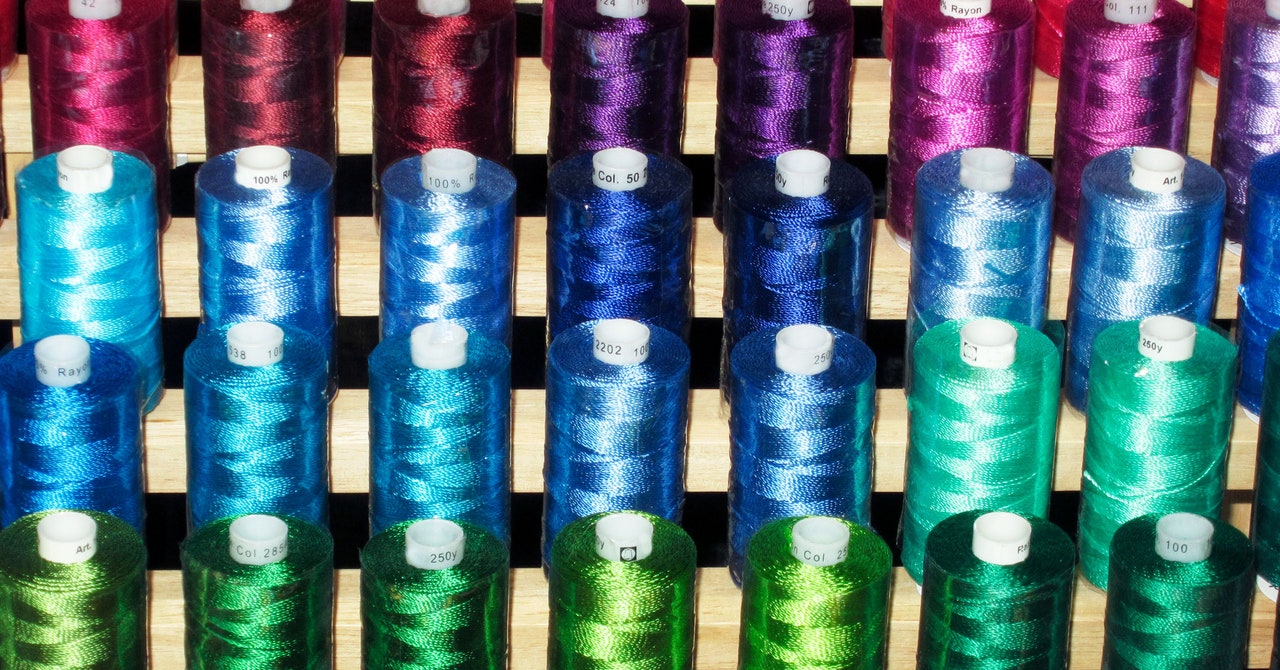
But why worry about invisible little bits of plastic escaping into the environment? Because microfibers (and microplastics in general) have thoroughly infiltrated Earth’s ecosystems. Just as a sea turtle might choke on a big piece of plastic like a shopping bag, so too might small animals, like the planktonic creatures that make up the base of the oceanic food web, have their digestive systems clogged with tiny plastics. And when microfibers soak in water, they leach their component chemicals. While it’s still too early to know the extent of the impact these chemicals have on marine species, scientists worry that they could be harmful for any number of them.
In fairness to synthetic microfibers, natural fibers aren’t faultless here either. “There’s a whole range of chemicals that are applied even to natural materials to give them different properties,” says Erdle. Clothing made from them is treated with dyes, of course, but also other substances to impart durability or waterproofing.
Scientists like Erdle are scrambling to better understand the effects of microplastics, especially when it comes to potential threats to human health. Researchers consistently find the particles in shellfish and other seafood that people consume. They’re in our water and in the air you’re breathing right now. One study earlier this year calculated that adults and children consume an average of 883 and 553 particles a day, respectively.
But the good news is that when it comes to pre-consumer microfiber pollution, there are actually business incentives for the clothing industry to clean up its act. Many factories actually treat their own wastewater in order to recycle it. If they can also sequester those microfibers and dispose of them properly (i.e., not spread them on fields), they can be socially and fiscally responsible. “What companies are finding is that by doing this, they actually save on water costs and utility bills that are associated with sewage,” says Sam Israelit, chief sustainability officer at the management consultancy Bain & Company and a coauthor of the new report. “And that reduction pays for the investments.”
“If we were able to scale these solutions across the sector,” adds Dempsey, “we think we could reduce the upstream microfiber loss by something approaching—or maybe even greater than—90 percent relative to the current loss rates.”
And not to shift the blame and responsibility to you, the consumer, but there are a few little things you can do too. You can wash your clothes in special bags or use a washing machine ball that grabs the fibers. There’s even a special filter called a Lint LUV-R that you can attach to your washing machine, which one study showed captures 87 percent of fibers.
But at the end of the day, we just need clothes that don’t shed so many damn fibers. Indeed, some clothing manufacturers are exploring potential innovations that would reduce shedding, such as using different kinds of materials or spinning synthetic yarn in different ways. “It’s a fine balance to reduce fiber loss without compromising on the performance that’s required out of that material,” says Sophie Mather, executive director of the Microfibre Consortium, a nonprofit founded by the outdoor gear industry to explore solutions to fiber fragmentation. (The consortium wasn’t involved in this new report, but it is collaborating with the Nature Conservancy on a road map for research into fiber release from textiles.)
A waterproof jacket needs to stay waterproof, for example, and stretchy yoga pants need to expand without tearing. “It’s not just about slapping a chemical finish on and saying, ‘We put this treatment on it. It’s going to stick the fibers in, and they’re not going to come out,’” says Mather. “I think that’s a very short-sighted view. It’s more about really understanding the intricacies of how that fabric has been put together in the first place.”


